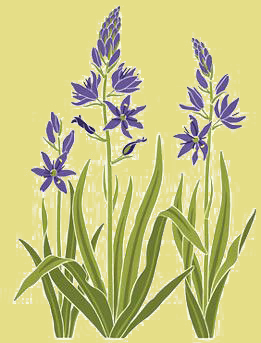Skunk cabbage

Western skunk cabbage, one of the Northwest's most wonderfully primitive-looking plants, grows in swampy, wet forest areas. It produces a pungent odor, hence its name. It is a harbinger of spring--you might even see it come up in snow.
Emerging from the base of the plant is the bright yellow spathe. The spathe envelops the spadix--the central phallic-shaped flowering structure--and large green leaves surround it. In spring, put your hand next to the spathe: the plant's strange chemistry generates heat.
The stinkiness of skunk cabbage might repel humans, but it attracts beneficial pollinators.
Pacific Northwest tribes have used a decoction of skunk cabbage roots to relieve stomach ailments. Baked roots have supplemented winter diets. Poultices or smoke from burning flowers, leaves, or roots have variously been used to treat rheumatism, influenza, and sleep disorders.

